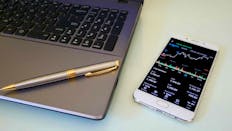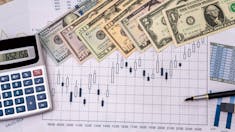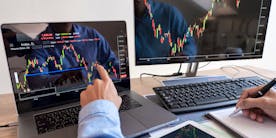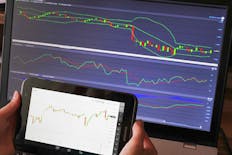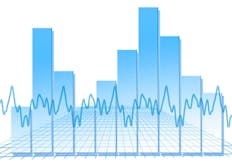Can You Make Money Trading Forex in 2025?
All products and services featured are independently selected by WikiJob. When you register or purchase through links on this page, we may earn a commission.
- A list of the Top Forex and CFD Trading Brokers for January 2025 are:
- Description of the Best Forex Trading Brokers for January 2025:
- How Some Traders Make a Living
- Case Study 1: George Soros
- Case Study 2: Bill Lipschutz
- Case Study 3: Stanley Druckenmiller
- How to Be a Professional Trader
empty
empty
empty
empty
empty
- Frequently Asked Questions
- Final Thoughts
The forex (foreign exchange) market is highly accessible thanks to its low entry barriers and the high leverage (borrowed capital) available. This makes it popular with novice traders investing small deposits for modest returns, as well as more experienced traders.
Trading forex successfully is difficult and does not happen overnight. However, for those willing to put in the time and effort, and to take the necessary calculated risks, it is possible to get rich trading forex.
In this article we will introduce some of the world’s most successful and well-known forex traders, examining how they made their fortunes and exploring what you can learn from their achievements.
We also suggest some training courses that could help to set you on the path to a lucrative career trading forex.
A list of the Top Forex and CFD Trading Brokers for January 2025 are:
1. IG
Pros
- Highly regulated
- MetaTrader 4 (MT4)
- Over 10,000 instruments
- Available in the UK and US
- 24/7 customer support
Cons
- High fees
- No deposit compensation scheme for US accounts
- No copy trading
- Inactivity fees
IG is a great share trading platform for beginners thanks to its user-friendly interface and extensive educational resources.
Pros of IG include a wide range of trading instruments and markets, as well as the ability to access multiple account types and trading platforms. The platform also offers a demo account for beginners to practise trading strategies before investing real money.
However, IG isn’t the cheapest share trading platform, with relatively high trading fees and a minimum deposit requirement of £250 when paying by credit/debit card or PayPal.
In terms of additional fees, IG charges a commission fee for share trading, starting from £8 per trade. There’s also a custody fee of 0.25% per year for holdings of £250 or more.
Overall, IG is a solid choice for beginners looking for a user-friendly platform with extensive educational resources, but investors should be aware of its fees and minimum deposit requirements.
2. AvaTrade
Pros
- Trading signals and strategies
- Automated trading
- User-friendly interface
- Variety of trading pairs
- Transparency
Cons
- Reliance on signals
- Subscription cost
AvaTrade consistently ranks among the top Forex and CFD trading brokers, offering a range of features and services that cater to both novice and experienced traders.
AvaTrade is a regulated broker with licenses from multiple reputable financial authorities, including the Central Bank of Ireland, the Australian Securities and Investments Commission (ASIC), and the Financial Services Commission (FSC) of the British Virgin Islands. This regulatory oversight ensures that AvaTrade adheres to strict standards of transparency, security, and client protection, instilling trust among traders.
AvaTrade offers a diverse range of trading instruments, including Forex currency pairs, cryptocurrencies, commodities, indices, stocks, and bonds. This wide selection allows traders to diversify their portfolios and access various markets, catering to different trading strategies and preferences.
AvaTrade provides user-friendly trading platforms that are suitable for traders of all levels of experience. Whether using the popular MetaTrader 4 (MT4) platform, the proprietary AvaTradeGO mobile app, or the advanced AvaTradeAct platform, traders have access to intuitive interfaces, advanced charting tools, real-time market data, and customizable features.
AvaTrade offers a wealth of educational resources to help traders improve their trading skills and knowledge. These resources include tutorials, webinars, e-books, market analysis, and trading guides, covering a wide range of topics such as technical analysis, fundamental analysis, risk management, and trading psychology.
AvaTrade offers competitive spreads and transparent fee structures, ensuring that traders can execute trades with minimal costs. The platform also provides access to leverage, allowing traders to amplify their trading positions and potentially increase their profits.
How Some Traders Make a Living
A professional forex trader is generally considered to be someone whose primary income is derived from trading on the forex market.
They may work for themselves, investing their own capital, or they might work for hedge funds or international banks, trading with clients’ money.
Those working for an employer receive a salary which can range from around £45,000 to upwards of £150,000.
The average income of someone trading on their own behalf is harder to quantify because forex is so decentralised and trading budgets vary widely.
Different forex traders will have different definitions of success, so you must understand what you want to achieve from your trading and set yourself realistic goals.
If you can consistently generate a monthly profit trading forex then you are doing well. However, if you want to get rich, it is worth looking to those individuals who have achieved the most remarkable forex returns:
Case Study 1: George Soros
George Soros was born in Budapest in 1930 and survived the Nazi occupation of Hungary before emigrating to the UK in 1947, where he attended the London School of Economics. He began his career working for merchant banks in the UK and US and then started his own hedge fund, Double Eagle, in 1969. This was later renamed Quantum Fund.
In 1992, Soros became known around the world as ‘the man who broke the Bank of England’.
At the time, Britain was part of the Exchange Rate Mechanism (ERM), which was set up to create a more stable monetary policy across Europe and to make exchange rates less variable.
Under the terms of the ERM, the British Government was required to intervene if the pound fell below a certain level compared to the German Deutsche Mark.
Soros foresaw that the Bank of England had been left vulnerable thanks to a combination of factors, including Britain’s high interest rates and high level of inflation.
As the value of the pound depreciated, Soros built up a huge short position in pounds sterling through his Quantum Fund. Following his lead, other traders also started betting against the pound.
On Tuesday, September 15th 1992, Soros began selling off vast amounts of sterling, causing its value to drop even further.
The following day, the Bank of England started buying up pounds in an attempt to prop up the currency, but as Soros continued to flood the market, the Bank’s plan had little effect.
That evening, the government announced that Britain would leave the ERM. The date, September 16th 1992, became known as Black Wednesday.
Soros made a reported profit of $1 billion in the process and earned a place in history.
To this day he is still recognised as one of the world’s best forex traders.
He is a proponent of the theory of reflexivity, a belief that investors’ perceptions of the market affect prices, which in turn influence how investors perceive the market. This was illustrated to dramatic effect in the run-up to Black Wednesday.
Learn Forex Trading with Asia Mentor
Case Study 2: Bill Lipschutz
Bill Lipschutz began his trading career in the late 1970s while still attending Cornell University in New York state. He made over $200,000 in that time but lost it all in one bad trade, learning a hard but valuable lesson in risk management.
He joined the investment bank Salomon Brothers in 1982. Forex markets were just taking off and Salomon Brothers had formed a new foreign exchange division which Lipschutz was asked to join.
He was an instant success, and by 1984 had become the principal forex trader for the firm. By the following year, he was reportedly making $300 million a year for Salomon Brothers.
He stayed with the company until 1990 and then went on to hold several other positions in foreign exchange. In 1995, he founded Hathersgate Capital Management with some of his former classmates from Cornell, where he remains principal and director of portfolio management.
Lipschutz is often known as the Sultan of Currencies. Like Soros, he believes in the theory of reflexivity, describing forex as a psychological market. He also stresses the importance of risk management, and of recognising that you will often make the wrong decisions when trading forex.
Case Study 3: Stanley Druckenmiller
Stanley Druckenmiller joined Pittsburgh National Bank as a management trainee in 1977 and quickly rose to become the bank’s head of equity research group.
In 1981, he set up his own company, Duquesne Capital Management. He then went on to work for George Soros for many years, taking the role of lead portfolio manager for Soros’ Quantum Fund and working with Soros on his famous short-selling of the British pound in 1992.
He was featured in the best-selling book, The New Market Wizards, by Jack D Schwager, and survived the economic collapse of 2008.
However, he subsequently closed Duquesne Capital Management, announcing that the constant pressure of living up to his own success had taken a ‘high emotional toll’. His net worth has been valued at more than $4 billion.
Like Lipschutz, Druckenmiller’s approach to forex trading revolves around recognising that you will be wrong much of the time. He emphasises the importance of making the most of the times when you are right and minimising damage when you get things wrong.
These three traders have shown that it is possible to become very rich trading forex, but discipline and courage are required. The traders mentioned above also demonstrated a strong understanding of risk management, as well as an ability to interpret how perceptions are likely to shape the market.
While learning from their achievements, it is also important to remember that there is no one perfect strategy for trading forex. You will need to develop a plan that works for you.
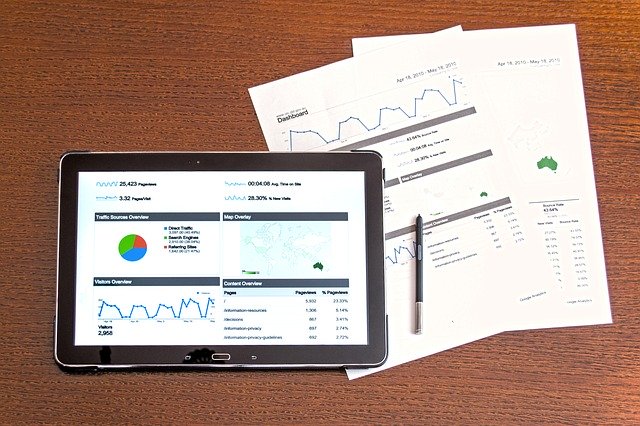
How to Be a Professional Trader
The first step towards becoming a professional forex trader is developing a thorough understanding of the market and using this to draw up a confident and well thought out trading strategy.
If you are new to the sector, it is a good idea to consider taking a course.
This will give you the tools and techniques you need to get started, and also help you to understand if forex trading is right for you.
The courses below will all give you a good grounding in the basics of trading forex:
1. Asia Forex Mentor
Best for: Beginner to Advanced traders
Price: $997
Ezekiel Chew the founder at Asia Forex Mentor isn’t your typical trainer. He is a recognized expert in the finance industry where he is frequently invited to speak at major financial events. His insights into the live market are highly sought after by retail traders.
Ezekiel is considered to be amongst the top traders around who actually care about giving back to the community. He makes six figures a trade in his own trading and, behind the scenes, Ezekiel trains the traders who work in banks, fund management companies and prop trading firms.
His highly regarded One Core Program teaches you how to trade not only forex but also stocks, commodities, crypto and more. To Ezekiel, it doesn’t matter what vehicle it is. It’s about trade selection and having various options opens up more opportunities for trades.
Please note, crypto is not available for UK clients.
The One Core Program covers:
The unique way he reads charts with a combination of price action and others. His 16 high win rate strategies that work on every move the market makes. The highly popular Road to Millions formula that turned many new traders into full-time traders.
The business behind trading, trade management methods, proprietary point calculation system and many more.
It’s no wonder that the One Core Program is considered one of the best trading courses around.
2. How to Trade
Providing a trading education that is designed to take you from the basics through to the advanced strategy, How to Trade has a wealth of world-class educational resources.
There are more than 50 free trading lessons, designed by globally recognised mentors, and when you complete them, you will receive a certificate. You can expect the free courses to include both forex and stocks education – from a basic introduction through to charts, technical analysis, indicators, risk management and psychology.
Alongside the free courses, there is premium content that comes with membership of the Trading Room. There are three different membership levels, with increasing benefits as the price goes up. Every level includes access to the Trading Room, all the premium content in the modular video academy, daily live trading sessions, trade sentiment analysis, weekly hot pick analysis, real time global news stream, live interactive workshops and access to pro trader tools.
The different pricing structures are as follows:
- The Apprentice – £77 per month, billed monthly. Includes one month access to the Trading Room.
- The Committed – £39 per month, billed six monthly. Includes six months access to the Trading Room. This also includes exclusive brokerage access and one-on-one with a mentor.
- The Professional – £36 per month, billed annually. Includes a year’s access to the Trading Room, all the features of the Apprentice and Committed subscription, but also a direct line to the mentors, the Trend Surfing Expert Advisor, and a license key to Forex Tester 5.
3. Forex 101
This free online course is provided by Admirals, a leading forex broker, and is available in 18 different languages.
The programme consists of nine video lessons focusing on key forex topics. The lessons are delivered by two industry experts and also come with detailed written notes.
At the end of each lesson, there is a quiz to test what has been learned.
The course is designed to help even complete beginners and can be accessed from anywhere at any time. The lessons are split into three stages; beginner, Intermediate and Advanced, with three video lessons in each.
The beginner stage covers basics such as key terms and how to set up your own demo account. These first three lessons are available to anyone, but if you want to progress to the next stage, you will then need to sign up for a demo account with Admirals.
In the intermediate stage, you will learn how to set up a trading platform, make a demo trade and start thinking about a trading strategy.
The advanced stage covers trading plans in more detail, how to use vital indicators and risk management.
4. Forex Trading A – Z(™)
This course is available on the online learning marketplace, Udemy, and is aimed at both beginners and more experienced forex traders.
It consists of 5.5 hours of video and four articles.
It is available on-demand and you will receive a certificate of completion.
The course is priced at £194.99 but Udemy frequently runs sales and special offers. Once you have purchased the course you will have lifetime access, which includes any new lessons added to the course.
The course covers topics such as:
- How the forex market operates
- Key forex terms
- How to choose a forex broker
- The three types of forex analysis – fundamental, technical and sentimental
- Calculating and managing risk
- Using different types of orders
- How to install and use the MetaTrader 4 trading platform
5. Learn to Trade
Learn to Trade is a forex training specialist based in London, which offers a range of courses teaching people about the forex market.
It runs free two hour workshops at locations across the UK, as well as webinars. It also provides longer paid-for courses at its office in Fulham, which incorporates a dedicated classroom suite and trading floor.
The free workshops cover the basics of forex such as:
- Fundamentals of trading
- Risk management
- Trading strategies
- The psychology of trading
The two-day training courses cover forex trading in more depth, including:
- Different trading strategies
- Learning to read trading charts
- Executing trades
You will also receive a one-to-one mentoring session from an experienced trader.
To take this course, you will need to use Learn to Trade’s trading software, SmartCharts.
Forex trading is real. It is the process of making trades between different currencies. Remember, all trading comes with risks.
The idea behind forex trading for profit is to buy a currency when it has a relatively low value and sell it when the value is higher. This means that you will be selling it for a profit.
In theory, yes, although you should always remember that any type of trading comes with risks. Just as you can make money, it is possible to lose money when you choose to buy and sell on a trading platform or through a broker.
Yes. It’s possible to make a profit with even a small investment and, over time, this can grow.
You should always remember to only invest the amount of money you can afford to lose. No matter how careful you are, there are always risks when you make trades and there is always the potential to lose money.
This can vary hugely depending on the markets and the amount of money being traded.
This is variable and it’s impossible to give a specific answer. The amount that you can earn will largely depend on the trades that you make, the conditions of the markets when you make trades and the amount of money that you are trading with.
As with any form of trading, you make money by selling currencies for more than you bought them for. This means that you are selling at a profit.
If you have never traded before, then it is a good idea to choose a platform that offers users the option of demo accounts. This enables individuals to practice trades and develop strategies without risking real money.
Choosing a strategy is a relatively personal process. The strategy that you choose will need to be suited to your requirements and needs.
Yes, you can potentially make money while trading on Pepperstone. This process is called forex trading. As with all forms of trading, there is an element of risk involved that needs to be accepted. You will need to decide how much risk you are willing to take and which risks aren’t worth it for you.
In theory, yes. Some individuals trade forex full-time and can make a substantial income. However, you should always remember that there is an element of risk when making trades, so you should never risk more than you can afford to lose.
There is always a risk involved with trading. However, there are a few things that can be done to help avoid making losses:
- Keep your leverage low
- Set up stop losses to your account
- Don’t trade around the time of large economic announcements such as government budgetary statements
Yes, it is possible. In theory, you can make as much money as you want through trading. But, you should always remember that there are risks involved. No matter how careful you are, there is the potential for trades to lose money rather than make it. You should never risk trading more than you can afford to lose.
Final Thoughts
Only a very few will ever make billions trading forex. However, as we have seen above, some traders have been successful.
Even the professional traders will lose money, but if you can start to regularly turn a profit, then you are well on your way to becoming a professional trader.
It is worthwhile to begin by learning from others’ achievements and putting in place your own thoroughly researched trading strategies and risk management systems.
WikiJob does not provide tax, investment, or financial services and advice. The information is being presented without consideration of the investment objectives, risk tolerance, or financial circumstances of any specific investor and might not be suitable for all investors. Past performance is not indicative of future results. Investing involves risk including the possible loss of principal.


